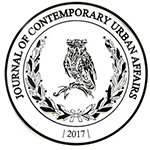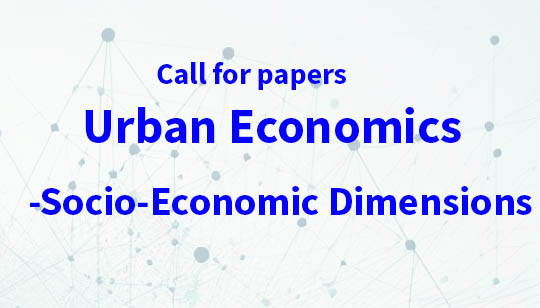Mediterranean Morphologies in Hot Summer Conditions: Learning from France’s “Glorious Thirty” Holiday Housing
DOI:
https://doi.org/10.25034/ijcua.2021.v5n1-2Keywords:
Morphology, Mediterranean, Environmental Assessment, Additive Architecture, Holiday HousingAbstract
Climate change and rising temperatures lead to an air-conditioning proliferation in summertime of the Mediterranean regions. This study links urban morphology to the microclimate. It claims that a lesson can be drawn from holiday housing morphologies designed with an additive approach during the “Glorious Thirty” French coastal development (1946-75). It is based on a morphological analysis of four case studies, with on the one hand re-drawing and site visiting, on the other hand, assessment of environmental performance through key parameters: Absolute Rugosity, Compactness Ratio, Building Density, Mineralization, Sky View Factor (SVF) and Height/Width (H/W) Ratio. Compared to literature reference values of a traditional courtyard morphology, the case studies are less compact and with a lower H/W Ratio (higher SVF), but they are less mineral than a historic medieval city centre. This research contributes to the search for semi-collective alternatives (for example additive morphologies) to individual housing in peri-urban areas, with high environmental performance in the summertime.
Downloads
References
Adolphe, L. (2001). A Simplified Model of Urban Morphology: Application to an Analysis of the Environmental Performance of Cities. Environment and Planning B: Planning and Design, 28(2), 183-200. https://doi.org/10.1068/b2631
Ali-Toudert, F., & Mayer, H. (2006). Numerical study on the effects of aspect ratio and orientation of an urban street canyon on outdoor thermal comfort in hot and dry climate. Building and Environment, 41(2), 94-108. https://doi.org/10.1016/j.buildenv.2005.01.013
Ali-Toudert, F., & Mayer, H. (2007). Effects of asymmetry, galleries, overhanging façades and vegetation on thermal comfort in urban street canyons. Solar Energy, 81(6), 742-754. https://doi.org/10.1016/j.solener.2006.10.007
Duport, L. J. (2015). Georges Candilis (1913-1995) architecte pour le plus grand nombre [Le Corbusier, 50 years later], LC2015 - Le Corbusier. http://doi.org/10.4995/LC2015.2015.664
Jamei, E., Rajagopalan, P., Seyedmahmoudian, M., & Jamei, Y. (2016). Review on the impact of urban geometry and pedestrian level greening on outdoor thermal comfort. Renewable and Sustainable Energy Reviews, 54, 1002-1017. https://doi.org/10.1016/j.rser.2015.10.104
Lukovich, T. (2018). UTZON 100. YBL Journal of Built Environment, 6(1), 130-150. https://doi.org/10.2478/jbe-2018-0009
Miao, C., Yu, S., Hu, Y., Zhang, H., He, X., & Chen, W. (2020). Review of methods used to estimate the sky view factor in urban street canyons. Building and Environment, 168, 106497. https://doi.org/10.1016/j.buildenv.2019.106497
Oke, T. R. (1988). Street design and urban canopy layer climate. Energy and Buildings, 11(1), 103-113. https://doi.org/10.1016/0378-7788(88)90026-6
Ratti, C., Raydan, D., & Steemers, K. (2003). Building form and environmental performance: archetypes, analysis and an arid climate. Energy and Buildings, 35(1), 49-59. https://doi.org/10.1016/S0378-7788(02)00079-8
Tadi, M., Zadeh, M., Biraghi, C., & Brioschi, L. (2017). Urban Porosity. A morphological Key Category for the optimization of the CAS's environmental and energy performance. GSTF Journal of Engineering Technology, 4(3). https://doi.org/10.5176/2301-394X_ACE17.68
Taleghani, M., Kleerekoper, L., Tenpierik, M., & van den Dobbelsteen, A. (2015). Outdoor thermal comfort within five different urban forms in the Netherlands. Building and Environment, 83, 65-78. https://doi.org/10.1016/j.buildenv.2014.03.014
Published
How to Cite
Issue
Section
License
Copyright (c) 2020 M.Sc. Marjan Sansen, Dr. Andrés Martínez, Dr. Philippe Devillers

This work is licensed under a Creative Commons Attribution 4.0 International License.

















